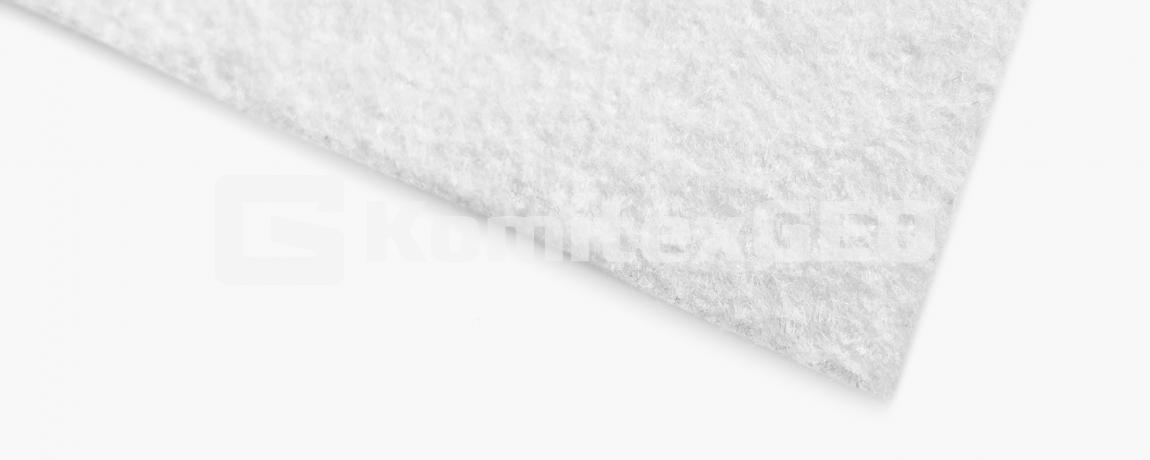Nonwoven Geotextile is a geosynthetic material from polymeric fibers of polyester and polypropylene. Nonwoven geotextile Geokom™ is manufactured using needle-punched staple technology (production from short fibers) with an option of calendering. Staple technology is more flexible and gives an opportunity to adapt material according to customer requirements. Width of roll – 6 m max. Density range – 100-600 g/m².
Functions
- Separation – geotextile is used as a layer between different layers of ground, preventing their intermixing and subsidence.
- Protection – geotextile in composite materials protects other geosynthetic materials from mechanical damages.
- Drainage – geotextile protects different layers in drainage systems, collects and drains water.
- Filtration – geotextile prevents silting and mixing of different layers of ground.
Polyester (PES) nonwowen geotextile GEOKOM™
- Made from recycled raw material.
- Full cycle production (production of fiber from PET bottles and caps).
- UV-resistant.
- Low cost.
- Stable high physical and mechanical performance.
- Distinction in colors (color depends on the color of the fiber / PET bottle).
- Calendered / non calendered.
Polypropylene (PP) nonwowen geotextile GEOKOM™
- Made from virgin polypropylene granulates.
- High biological resistance. No decay, no mold.
- Stable high physical and mechanical performance.
- High resistance to aggressive alkaline and acidified environments.
- UV-stabilizer or color can be added (originally white).
- Calendered / non calendered.
Advantages
- Resistant to rotting, decomposition, destruction.
- Not exposed to microorganisms, insects and rodents.
- High air and water permeability.
- Insensitive to temperature differences.
- High operational characteristics in various climatic conditions.
- Environmentally safe.
- Light weighted.
- High elasticity.
- Simple installation.
- Resistant to mechanical damages (breaks, punctures).
- Long life-cycle.
- Reasonable price.


